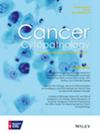Clinicopathological and molecular characterization of non–small cell lung cancer with pericardial effusions
Abstract
Background
Cytological evaluation is essential for assessing pericardial effusions (PEs) in non–small cell lung cancer (NSCLC). This study retrospectively examined the clinicopathological, molecular, and prognostic characteristics of patients with NSCLC with PE.
Methods
Clinical data from 80 patients with NSCLC with PE treated at an academic center over the course of 15 years were reviewed. PE specimens were categorized according to the International System for Reporting Serous Fluid Cytopathology (ISRSFC). The analysis included patient demographics, molecular alterations, cytopathology, histology, and survival outcomes.
Results
Of the 80 patients, 36 (45%) were female and 90% had stage IV disease. A smoking history was noted in 58 patients (72.5%), and 22 patients (27.5%) presented with tamponade. Lung adenocarcinoma predominated (87.5%). The ISRSFC categorized 25% of the specimens as negative for malignancy (NFM), 7.5% as atypia of undetermined significance (AUS), 3.75% as suspicious for malignancy (SFM), and 63.75% as malignant (MAL). Immunohistochemistry in 57 specimens identified thyroid transcription factor 1 (65%) as the most frequently positive marker. Molecular analysis revealed p53 mutations (59.1%) as the most prevalent, followed by KRAS (34.1%) and EGFR (15.9%). Kaplan–Meier analysis showed significantly better survival for NFM patients than non-NFM patients (MAL, SFM, and AUS; p = .0036). Bloody PEs and tamponade were associated with worse outcomes. The immunotherapy group achieved the most prolonged survival among stage IV patients (9.07 months; p = .017). Cox regression confirmed cytology-negative status as an independent prognostic factor.
Conclusions
Cytological evaluation and ISRSFC classification are crucial for NSCLC-associated PEs. A multidisciplinary approach integrating cytology, immunohistochemistry, and molecular profiling is essential for optimal management and prognosis.




 求助内容:
求助内容: 应助结果提醒方式:
应助结果提醒方式:


